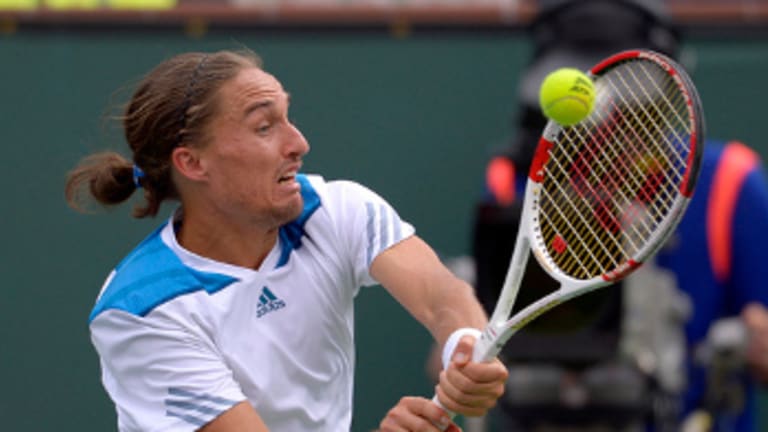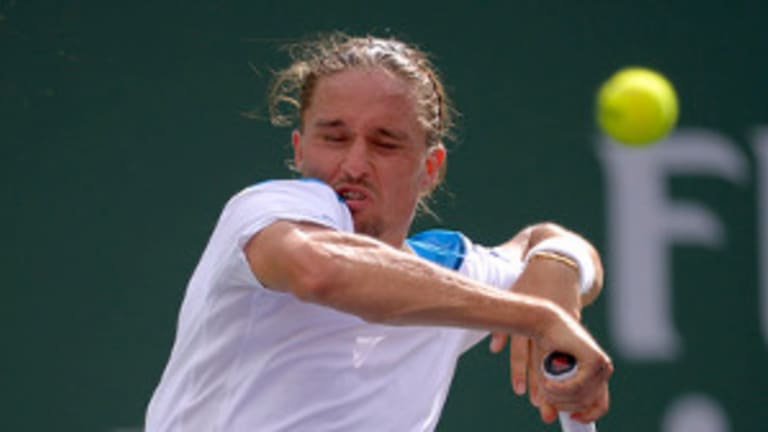Dolgopolov is having a good month, playing his most consistent tennis since he reached No. 13 in January 2012. Three weeks ago he made the final in Rio on clay, beating Fabio Fognini and David Ferrer before losing to Nadal; two weeks ago he made the semis on hard courts in Acapulco. So far at Indian Wells, he has beaten the No. 1 player in the world for the first time and reached his first semifinal at a Masters event.
It would be tempting to draw a line between the troubles in Dolgopolov's native Ukraine, which began in earnest late last year, and his sudden success. He says he’s certainly aware of what’s happening there, and he made sure that one of his signed shoes went to a couple who were holding up a Ukrainian flag in the second row. After the match, Dolgopolov said that he’s “not a politician,” and he can only play tennis, but he’s happy if he has “put a smile on people’s faces” back home for a few minutes.
Dolgopolov credits his surge to something simpler: He was healthy enough to get a solid, month-long training block in at the end of 2013. The good form has followed. Asked how he beat Nadal, Dolgopolov answered in his usual matter-of-fact way, like a surfer from the Black Sea.
“I’ve played quite good for a few weeks,” he shrugged. “I’m healthy, in good form, so why not?”
There’s been a lot of talk recently about players being inspired to make breakthroughs by Stan Wawrinka’s Australian Open title. More than anyone, I’d like to see Dolgopolov, with his inside-out grace, and his backstory as a Ukrainian, continue to make strides. He can be frustrating, but he never seems to hit a shot or play a point exactly the same way twice. A prodigy and the son of a tennis pro who suffered an early case of burnout, it’s nice to see him enjoying the sport again.
I’ve liked Dolgopolov’s game since seeing him as a junior at the Orange Bowl in 2005. He was all about the drop shot then, and I wrote that he might be the next Fabrice Santoro. At the start of this year, Dolgopolov talked about hiring Santoro as his coach, but they never got past the talking stage. The Magician is probably one of the few people who could have understood the Dog.
On the one hand, I would have loved to see what those two came up with together—in some ways, Dolgo as Baby Santoro was more of a pure genius than he is today. On the other hand, as far as his results go, staying away from the Magic Man is probably the best thing that happened to Dolgopolov all year. He understands himself, and that’s enough.

